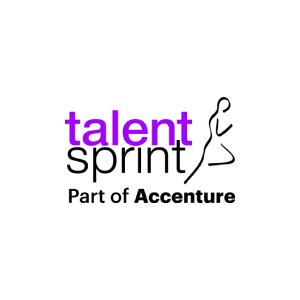Artificial Intelligence (AI) Myths

Will AI replace jobs? Can we swap AI and ML? Can we deploy AI without a plan? Let’s find out.
Artificial intelligence (AI) is creating more myths, fears, and skepticism in many minds than what is corroborated by actual events and facts. So, shall we swim deep into these waters and face our fears in the eye? To do that, we have to deconstruct some myths.
Artificial intelligence (AI) will replace all jobs
Is AI going to make human labor obsolete? That’s a plausible apprehension. After all, AI is supposed to remove the need for human labor with smart intelligence and clever automation? But wait. This is only for labor that is unnecessarily time-intensive and resource-depleting. AI is designed to augment humans. It is aimed to help them not only do their jobs better but also to do better jobs. It will liberate their time and brainpower for innovative leaps. Recall how the Internet created millions of jobs and, at the last count, was comprising 10 percent of the US GDP. In a PwC Annual Global CEO Survey, it was seen that 63 percent of CEOs believe AI will have a more significant impact than the Internet. By 2030, AI can lead to an estimated $15.7 trillion, or a 26 percent jump in global GDP – as per PwC’s Global AI Study.
It was observed here that any job losses from automation are likely to be broadly offset in the long run by new jobs which would be created because of the larger and wealthier economy made possible by these new technologies. For example, the World Economic Forum’s ‘Future of Jobs Report’ 2020 has estimated that 85 million jobs will be displaced, but 97 million new jobs will be created across 26 countries by 2025.
Artificial intelligence (AI), machine learning (ML), and deep learning (DL) are all the same and can be used interchangeably
They are all part of the same species, but they are different creatures. AI is about creating and using intelligence that is as close as possible to human cognitive powers. In machine learning (ML) technologies, computers are trained to analyze data, identify hidden patterns, make classifications, and predict future outcomes. As for deep learning (DL), it is a subset of machine learning based upon a conceptual model of the human brain. It works on neural networks, which have multiple layers that interconnect. If we talk about natural language processing or NLP, it represents extracting or generating meaning and intent from text. This text is in a readable, stylistically natural, and grammatically correct form. This umbrella also houses computer vision as a technology segment. This is where the extraction of meaning and intent from visual elements happens. These can be as characters (document digitization) or images as faces, objects, scenes, and activities.
Enterprises have been using these segments for various purposes and at multiple levels. In a Deloitte survey, it has been spotted that 67 percent of respondents are using machine learning (ML) today, and 97 percent are using or planning to use it in the next year. As to deep learning (DL), 54 percent said they use deep learning (DL), and 95 percent are using or planning to use it next year. About 58 percent of global respondents adopted natural language processing or NLP, and 94 percent are using or planning to use it next year. On computer vision, 56 percent said they use it and 94 percent are using or planning to use it next year.
Artificial intelligence (AI) is more intelligent than humans
AI is supposed to transcend human intelligence and get to the level of singularity. But that level of explosive growth and power is not to be seen for many decades yet. Many efforts and projects have been raised to the level of AI to strong AI instead of the present and imminent weak AI level. But general AI is not the same as the initial AI efforts hint at. We would need a lot of research and progress to ever come to a level where AI surpasses human intelligence. The question, for now, is – how much can it empower humans?
Companies don’t need an artificial intelligence (AI) strategy
If we look at Deloitte’s ‘State of AI in the Enterprise’ survey, we see that seasoned (26 percent) is setting the pace in terms of AI adoption maturity. These are companies that have undertaken many AI production deployments and have developed a high level of AI expertise across the board. They are selecting AI technologies and suppliers, identifying use cases, building and managing AI solutions, integrating AI into their IT environment and business processes, and hiring and managing AI technical staff. Look at the category of skilled (47 percent) adopters, and they seem to have launched multiple AI production systems but are not yet as AI-mature as the seasoned organizations. They show many gaps – on their number of AI implementations, their level of AI expertise, or both.
As to starters (27 percent), well, they are just dipping their toes into AI adoption. They have not shown solid proficiency in building, integrating, and managing AI solutions. AI adoption needs a careful strategy around many areas like- implementation, financial investment, competitive advantage, and expected transformative impact.
An enterprise cannot simply wake up one morning and start investing in AI. It has to know exactly what applications, goals, and differences it is aiming for. It has to chart a proper path for it. AI needs strategic mapping – and at continuous levels.
Interestingly, ninety percent of seasoned adopters in the survey believe AI is “very” or “critically” important to their business today. They are the ones embracing machine learning (ML), deep learning (DL), computer vision, and natural language processing or NLP at a high rate. Adopters are investing significantly, with 53 percent spending more than $20 million on AI-related technology and talent over the past year. Seventy-one percent of adopters expect to increase their investment in the next fiscal year by an average of 26 percent. Seasoned adopters typically achieve payback on their investments in a shorter amount of time. Almost 81 percent reported their payback period is less than two years.
AI is here to stay. And grow. IDC has also forecasted that spending on AI technologies will grow to $97.9 billion in 2023—over two-and-a-half times the spending level of 2019. That’s just one estimate. A lot of predictions hint at disruptions of massive proportions for many industries. Now is the time to look beyond AI myths and do some reality checks. And to gain from AI. This is the right time for professionals to build relevant capabilities in this space and shape their careers.

TalentSprint
TalentSprint is a leading deep-tech education company. It partners with esteemed academic institutions and global corporations to offer advanced learning programs in deep-tech, management, and emerging technologies. Known for its high-impact programs co-created with think tanks and experts, TalentSprint blends academic expertise with practical industry experience.



